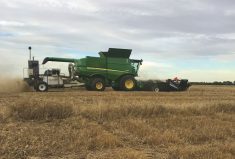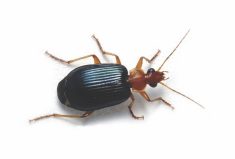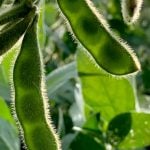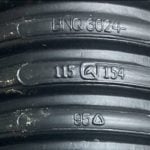I get asked about field horsetail management more than any other weed, and it’s the one that I have the least amount of effective solutions for. Sure, you can get reasonably good top-growth control with the right herbicide, but the success is short-lived due to field horsetail’s tenacity. I often joke that the best way to get rid of this weed is with a backhoe, since that is what you’ll need to exhaust its massive root system. One Ontario farmer observed field horsetail rhizomes at a depth of six metres when digging a water reservoir (Cody and Wagner, 1980).
Read Also

Agronomists share tips for evaluating new crop products and tech: Pt. 3
With new products, new production practices and new technology converging on the agriculture industry at a frenetic pace in recent…
Positive attributes
Like most weedy plants, there are alleged “medicinal” uses to treat hair loss, diabetes and arthritis. The above-ground horsetails can also take up and deposit silica in the walls of their epidermal cells, which is why they have been used to scour pots and tools (Cody and Wagner, 1980).
Poisonous
Field horsetail contains thiaminase, an enzyme which will cause thiamine deficiency in horses. The side effects include weakness, a rapid pulse and muscular exhaustion (Kingsbury, 1964). A 1952 case study demonstrated that two of three horses that had contracted poisoning from horsetail responded favourably to injections of thiamine hydrochloride. However, the other horse, who for 35 days ate a ration consisting solely of hay contaminated with horsetail, did not respond to treatment (Henderson, 1952). This weed is rarely lethal to cattle (Kinsbury, 1964), most likely because thiamine can be produced in the rumen.
Crop yield losses
Very little data exists on yield losses from field horsetail competition. Corn silage yields in Quebec were reduced by 95 per cent when field horsetail, at a density of 1.6 million shoots per acre, was uncontrolled all season (Coutier and Watson, 1979). Yet an Ontario study stated that “Field horsetail was not a serious competitor with corn” since corn grain yield was only reduced once (by 13 per cent) in four experiments when left uncontrolled (Wagner, 1980). However, the Wagner study provides no information as to the density of field horsetail in each of the experiments and one would assume that this yield loss relationship is density dependent. An Alberta study found barley yields were unaffected by field horsetail densities of 200,000 shoots per acre (Hoyt and Carder, 1962).
Tillage
Since the root system of field horsetail extends far below any tillage implement, tillage will only temporarily control this weed. However, when tillage is removed from a cropping system, field horsetail will dominate in the areas where it exists (Légère and Samson, 2004). Plowing in late autumn or early spring has been more effective than early autumn plowing (Mukula, 1966).
Timing of herbicide applications
Control of field horsetail can be variable even when an effective active ingredient like MCPA is used. More consistent control of field horsetail top-growth is achieved when applications are delayed until the vegetative shoots of the plant are fully developed. A British study reported successful shoot kill when growth-regulating herbicides (e.g., MCPA, 2,4-D) had been applied to vegetative shoots once they had reached 25 cm in height (Holly, 1953). More recently, herbicide efficacy studies on field horsetail that have been conducted by the University of Guelph’s Ridgetown campus point to better herbicide performance if applications are made when the majority of field horsetail shoots are 20 cm or more in height.
Should we be optimistic? On the photo at the top of this page, we see reasonably good top growth control of field horsetail with one of nine different treatments being evaluated in 2016 (left) compared to un-sprayed check (right). I’ll keep you updated if there is anything worth noting.
Have a question you want answered? Hashtag #PestPatrol on Twitter to @cowbrough or email Mike at [email protected].















